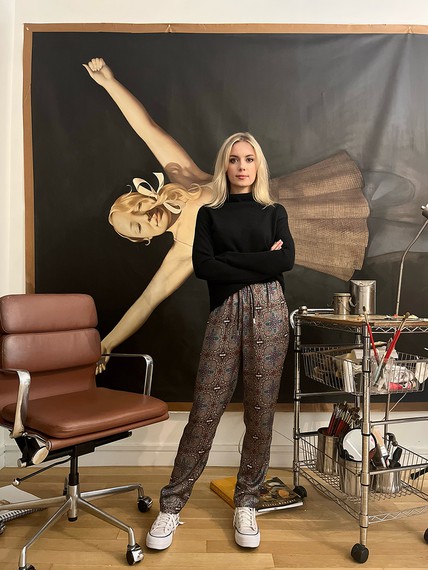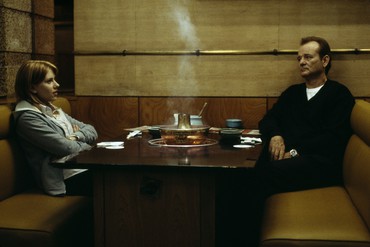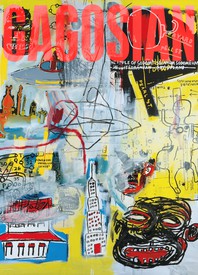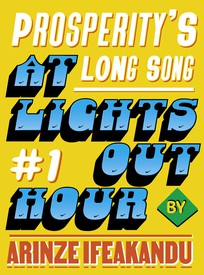New Representation
Anna Weyant
Gagosian is pleased to announce the gallery’s global representation of painter Anna Weyant. The artist will be the subject of a solo exhibition at the gallery in New York this fall.
Weyant’s precisely rendered paintings depict figures embroiled in tragicomic narratives, and still-life compositions in which everyday objects adopt an uncanny, portentous air. Far from presenting these individuals and items as generalized types, however, she employs a keen ironic wit to evoke their myriad idiosyncrasies and contradictions.
#AnnaWeyant

Photo: courtesy the artist
Related News

Screening and Talk
Anna Weyant
Austin Weyant
Friday, March 22, 2024, 6:30pm
Metrograph, New York
metrograph.com
This event is sold out.
Join Anna Weyant and her brother, actor Austin Weyant, for a conversation and screening on the occasion of Anna Weyant Selects, a film program curated by the artist as part of an ongoing series copresented by Gagosian and Metrograph. The pair will introduce the selected films—Lost in Translation (2003), Gone Girl (2014), and Parasite (2019)—which explore power dynamics, complexities, and deceptions in relationships and wider society, as well as discuss the impact film has had on their respective practices. After the talk, Lost in Translation, directed by Sofia Coppola, will be screened.
Still from Lost in Translation (2003), directed by Sofia Coppola

Screening
Anna Weyant Selects
March 22–April 2, 2024
Metrograph, New York
metrograph.com
Anna Weyant has curated a selection of three films as part of an ongoing series copresented by Gagosian and Metrograph. Weyant comments, “The experience of watching each of these films is markedly different with respect to their individual style, storytelling, aesthetic, and dialogue. When I consider what it is about these stories that resonates with me, I am repeatedly drawn to their through lines of the power dynamics, complexities, and deceptions in relationships (and society); the uneasiness that comes from not fully knowing one’s surroundings (or the company one keeps); and our inherent desires for connection in an increasingly isolating world.”
Featured films include
Lost in Translation (2003, directed by Sofia Coppola)
Gone Girl (2014, directed by David Fincher)
Parasite (2019, directed by Bong Joon Ho)
Still from Gone Girl (2013), directed by David Fincher

Commission
Anna Weyant
La Forza del Destino
January 30–March 31, 2024
Metropolitan Opera, Lincoln Center, New York
www.metopera.org
As part of the Gallery Met Banners project, the Metropolitan Opera has commissioned Anna Weyant to create a painting to celebrate the staging of Giuseppe Verdi’s Italian opera La Forza del Destino. The work will be reproduced in the form of a sixty-foot banner installed on the façade of Lincoln Center in New York during the production. Weyant’s painting, which shares the same name as the opera, portrays Leonora, the tortured principal character, with closed eyes, bright red lips, and a single visible pearl earring. The words “Forza” and “Destino” are rendered in a vintage font with a scarlet hue and bloody “dripping” effect, evoking posters for classic Italian-made horror movies of the 1950s and ’60s.
Anna Weyant, La Forza del Destino, 2023, installation view, Metropolitan Opera, Lincoln Center, New York © Anna Weyant. Photo: Jonathan Tichler/Met Opera

Francesca Woodman
Ahead of the first exhibition of Francesca Woodman’s photographs at Gagosian, director Putri Tan speaks with historian and curator Corey Keller about new insights into the artist’s work. The two unravel themes of the body, space, architecture, and ambiguity.

Now available
Gagosian Quarterly Spring 2024
The Spring 2024 issue of Gagosian Quarterly is now available with a fresh cover design featuring Jean-Michel Basquiat’s Lead Plate with Hole (1984).
Simon Hantaï: Azzurro
Join curator Anne Baldassari as she discusses the exhibition Simon Hantaï:Azzurro, Gagosian, Rome, and the significance of blue in the artist’s practice. The show forms part of a triptych with Gagosian’s two previous Hantaï exhibitions, LES NOIRS DU BLANC, LES BLANCS DU NOIR at Le Bourget in 2019–20, and Les blancs de la couleur, la couleur du blanc in New York, in 2022.

Sofia Coppola: Archive
MACK recently published Sofia Coppola: Archive 1999–2023, the first publication to chronicle Coppola’s entire body of work in cinema. Comprised of the filmmaker’s personal photographs, developmental materials, drafted and annotated scripts, collages, and unseen behind-the-scenes photography from all of her films, the monograph offers readers an intimate look into the process behind these films.

Prosperity’s Long Song #1: At Lights-Out Hour
We present the first installment of a four-part short story by Arinze Ifeakandu. Set at the Marian Boys’ Boarding School in Nigeria, “Prosperity’s Long Song” explores the country’s political upheavals through the lens of ancient mythologies and the mystical power of poetry.

Mount Fuji in Satyajit Ray’s Woodblock Art, Part II
In the first installment of this two-part feature, published in our Winter 2023 edition, novelist and critic Amit Chaudhuri traced the global impacts of woodblock printing. Here, in the second installment, he focuses on the films of Satyajit Ray, demonstrating the enduring influence of the woodblock print on the formal composition of these works.

Adaptability
Adam Dalva looks at recent films born from short stories by the Japanese writer Haruki Murakami and asks, What makes a great adaptation? He considers how the beloved surrealist’s prose particularly lends itself to cinematic interpretation.

Vladimir Kagan’s First Collection: An Interview with Chris Eitel
Chris Eitel, Vladimir Kagan’s protégé and the current director of design and production at Vladimir Kagan Design Group, invited the Quarterly’s Wyatt Allgeier to the brand’s studio in New Jersey, where the two discussed the forthcoming release of the First Collection. The series, now available through holly hunt, reintroduces the first chair and table that Kagan ever designed—part of Eitel’s efforts to honor the furniture avant-gardist’s legacy while carrying the company into the future.

Game Changer: Alexey Brodovitch
Gerry Badger reflects on the persistent influence of the graphic designer and photographer Alexey Brodovitch, the subject of an upcoming exhibition at the Barnes Foundation, Philadelphia.

Outsider Artist
David Frankel considers the life and work of Jeff Perrone, an artist who rejected every standard of success, and reflects on what defines an existence devoted to art.

Goetheanum: Rudolf Steiner and Contemporary Art
Author and artist Ross Simonini reports on a recent trip to the world center of the anthroposophical movement, the Goetheanum in Switzerland, exploring the influence of the movement’s founder and building’s designer Rudolf Steiner on twentieth-century artists.

Duane Hanson: To Shock Ourselves
On the occasion of an exhibition at Fondation Beyeler, novelist Rachel Cusk considers the ethical and aesthetic arrangements that Duane Hanson’s sculpture initiates within the viewer.
